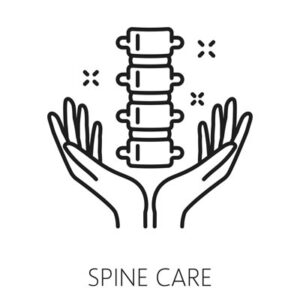Relieving SI joint pain while sitting or sleeping can be challenging but is achievable with the right strategies. As someone who’s managed SI joint discomfort, I’ve found that positioning, support, and targeted exercises are essential. For sitting, using a cushion or lumbar support helps align the pelvis, reducing strain on the SI joint. When sleeping, lying on your side with a pillow between your knees or on your back with a cushion under your knees can ease pressure. Gentle stretching and strengthening exercises for the core and hips also provide long-term relief. Minor adjustments can make a big difference.
Understanding SI Joint Pain
As a spine specialist, I’ve seen countless patients struggling with sacroiliac (SI) joint pain. Think of your SI joints as the unsung heroes of your body – they’re the connectors between your spine and pelvis, working tirelessly to support your upper body weight. When these joints act up, even simple activities like sitting or getting a good night’s sleep can feel like mission impossible!
What Sets Off SI Joint Pain?
Several factors can trigger SI joint discomfort:
* Pregnancy Changes: Those pregnancy hormones that help prepare for childbirth can also loosen the SI joints
* Trauma: Falls or accidents (even minor ones) can disturb these sensitive joints
* Arthritis: Our old friend arthritis doesn’t play favorites – it can affect SI joints, too
* Poor Posture: Yes, those hours of slouching at your desk can come back to haunt you!
Sitting Comfortably with SI Joint Pain
Let’s face it – sitting at a desk all day can be a real pain in the… well, SI joint! Here’s how to make it more bearable:
The Perfect Posture Recipe
1. Neutral Spine Position
- Imagine a string pulling you up from the crown of your head
- Keep your shoulders relaxed
- Maintain your natural lower back curve
2. Chair Choice Matters
- Look for good lumbar support
- Adjust the height so your feet rest flat on the floor
- Keep your knees at or slightly below hip level
Best Sitting Positions
Try these positions that my patients find helpful:
See more: 5 Ways to Improve and Preserve Spine Health
Office Worker’s Survival Guide
Take a “movement snack” every 30 minutes
- Use a standing desk if possible
- Keep your computer screen at eye level
- Consider using an ergonomic chair cushion
Sweet Dreams: Sleeping with SI Joint Pain
Getting quality sleep with SI joint pain doesn’t have to be a nightmare. Here’s what works:
Best Sleeping Positions
Side-Sleeping Champions:
- Place a firm pillow between your knees
- Keep your spine aligned
- Slightly bend your top leg
Back-Sleeping Success:
- Put a pillow under your knees
- Use a small rolled towel under your lower back
- Keep your spine in a neutral position
Mattress and Pillow Choices
Think of your bed as an investment in your health:
* Mattress:
- Medium-firm support (not too soft, not too hard)
- Memory foam or hybrid options work well
- Replace every 7-8 years
* Pillows:
- Cervical pillow for neck support
- Body pillow for side sleeping
- Pregnancy pillow (even if you’re not pregnant!)
Additional Tips for Managing SI Joint Pain
Physical Therapy Heroes
These exercises are game-changers for SI joint pain:
1. Pelvic Tilts
- Lie on your back
- Gently rock your pelvis
- Think “tail between your legs”
2. Bridge Exercise
- Strengthens supporting muscles
- Start gently, build gradually
- Keep your core engaged
Home Remedies That Work
Heat and Cold Therapy:
- Heat before activity
- Ice after exercise
- 15-20 minutes max each time
The Mind-Body Connection
Don’t underestimate the power of:
- Gentle yoga (modified for SI pain)
- Tai chi for balance
- Meditation for pain management
Workplace Warriors
Make your workspace work for you:
- Adjust your chair height properly
- Use a footrest if needed
- Consider a sit-stand desk
- Take regular stretch breaks
When to Call the Doc
Time to pick up the phone when you experience:
- Pain that wakes you up at night
- Numbness or tingling in your legs
- Fever along with SI joint pain
- Pain that doesn’t improve with home care
A friendly reminder from your spine doc: Everyone’s SI joint pain is unique, like a fingerprint. What works for one person might not work for another. Keep trying different combinations of these techniques until you find your sweet spot. And remember, if these tips aren’t relieving, reaching out for professional help is perfectly okay. At SpineWorks, we’re here to support you on your journey to better spine health!
Would you like to know more about specific exercises or have questions about managing your SI joint pain? Drop them in the comments below, and let’s keep the conversation going about managing SI joint pain effectively!






